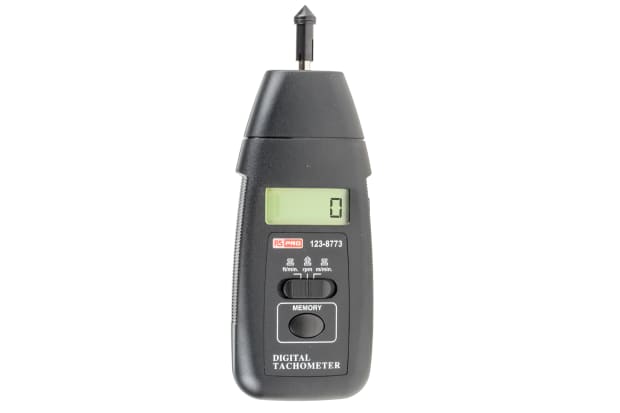Tachometer Buying Guide: Attributes to Look for and Best Brands
Tachometer Buying Guide: Attributes to Look for and Best Brands
Blog Article
Discovering the Functions and Benefits of a Tachometer: A Comprehensive Guide for Auto Enthusiasts
In the world of automotive instrumentation, the tachometer stands as a vital device that offers drivers beneficial understandings right into their car's performance. tachometer. From supplying real-time data on engine speed to assisting in maximizing gear shifts, the tachometer functions as greater than just a dial on the dashboard. Its multifaceted functions not only boost driving experience however additionally play a pivotal duty in keeping engine wellness and effectiveness. As we dig into the detailed workings and advantages of a tachometer, a deeper understanding of its significance for automobile lovers and experts alike will certainly unfold.
Understanding the Basics of a Tachometer
In the world of auto instrumentation, understanding the basics of a tachometer is crucial for any kind of cars and truck fanatic wanting to delve right into the complexities of engine performance monitoring. A tachometer, often shown on the dashboard of a lorry, gauges the engine's revolutions per min (RPM) This essential instrument gives real-time information on exactly how quickly the engine crankshaft is turning. By keeping an eye on the RPM, vehicle drivers can ensure they are running within the optimal range to take full advantage of efficiency and effectiveness.
Tachometers generally have a range marked in changes per minute, with a redline indicating the maximum speed at which the engine can securely operate (tachometer). This info is essential for preventing engine damage and enhancing equipment moving for manual transmissions. Additionally, tachometers can help in detecting engine concerns such as misfires or a stopping working ignition system by finding irregular RPM analyses
Significance of Keeping An Eye On Engine Rate

Monitoring engine speed is an important facet of car maintenance and performance optimization for automobile fanatics and professionals alike. The engine speed, gauged in changes per minute (RPM), shows just how quickly the engine's crankshaft is rotating. By maintaining a close eye on the RPM, motorists can guarantee that the engine is operating within the optimal variety, avoiding prospective damages from over-revving or stalling. Monitoring engine speed is specifically critical during equipment changes, as it aids vehicle drivers establish the appropriate time to transform equipments for smooth acceleration and reliable fuel usage.
Additionally, tracking engine rate can likewise offer useful insights into the total wellness of the lorry. Generally, keeping track of engine speed with a tachometer is a basic method that can boost driving performance, extend engine life, and guarantee a safer and extra satisfying driving experience.
Enhancing Performance Through Equipment Shifts
Correct equipment shifting makes sure that the engine runs within its optimum power band, permitting for smooth velocity and boosted gas economic climate. When moving gears, it is essential to pay focus to the engine rate showed on the tachometer.

To attain peak performance via gear changes, vehicle drivers must exercise smooth and prompt transitions between gears, matching engine rate with roadway speed to harness the complete capacity of their vehicle's powertrain.
Optimizing Performance With a Tachometer
Grasping the art of gear moving in high-performance lorries not only boosts driving experience however likewise plays a critical duty in taking full advantage of effectiveness with a tachometer. tachometer. By paying very close attention to the tachometer readings, chauffeurs can optimize their equipment shifts to operate within the engine's most efficient variety. When increasing, changing gears at the appropriate RPM indicated by the tachometer can prevent the engine from overworking or underperforming, leading to enhanced fuel performance and overall performance
Furthermore, a tachometer helps drivers avoid unnecessary revving, official source which not only squanders gas but also places unneeded stress on the see this here engine. Consistently monitoring the tachometer while driving enables smoother equipment shifts, decreasing deterioration on the transmission system gradually.

Advanced Tips for Tachometer Utilization
Enhancing driving accuracy through adept tachometer interpretation is essential to maximizing car efficiency. To look into sophisticated ideas for tachometer application, consider incorporating using shift lights. Change lights are aesthetic signs that brighten when it's time to move equipments based upon engine revolutions per min (RPM), enabling smooth gear modifications without constantly checking the tachometer. Furthermore, practicing heel-and-toe downshifting strategy can be useful when aiming for smoother shifts in between gears. This strategy includes using both the brake and accelerator pedals at the same time while downshifting, helping to preserve engine RPM and protect against jerky movements. Making use of a performance tachometer with customizable setups can give real-time information customized to certain driving choices or car alterations. By fine-tuning shift points and setting warning limits, motorists can enhance velocity and engine efficiency while lessening the risk of over-revving. These sophisticated techniques, when coupled with a deep understanding of tachometer readings, can raise driving effectiveness and general driving experience.
Conclusion
In verdict, the tachometer functions as a vital tool for auto enthusiasts to keep track of engine speed, enhance efficiency via gear shifts, and maximize performance. By understanding the features and benefits of a tachometer, chauffeurs can great post to read maximize their driving experience and extend the life expectancy of their car. Utilizing sophisticated pointers for tachometer utilization can further enhance driving abilities and overall efficiency when traveling.
Report this page